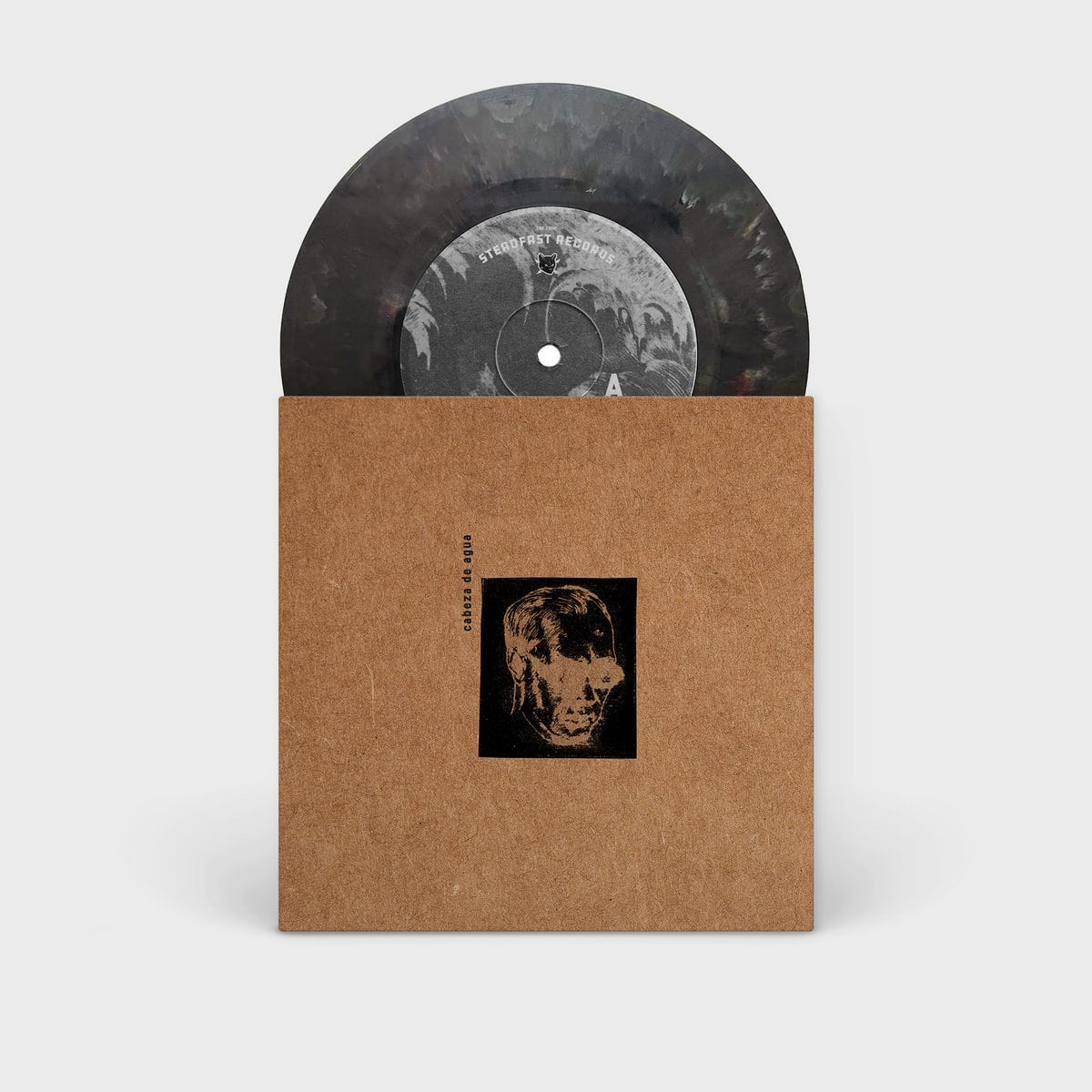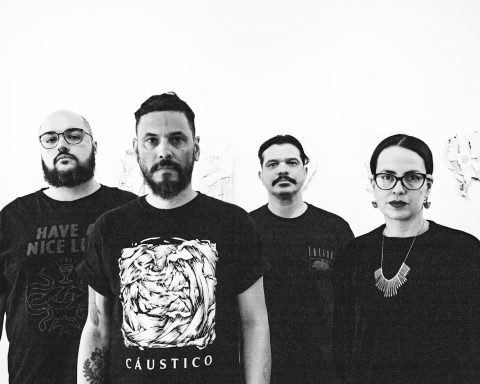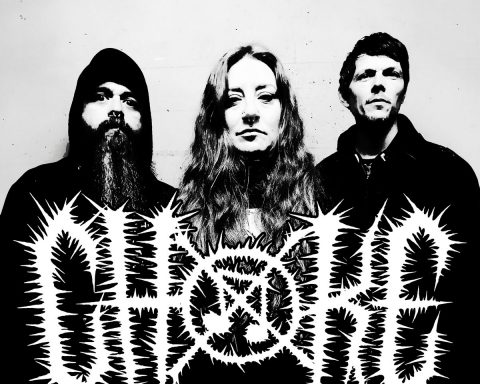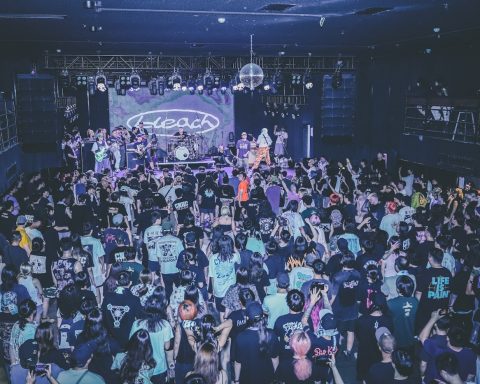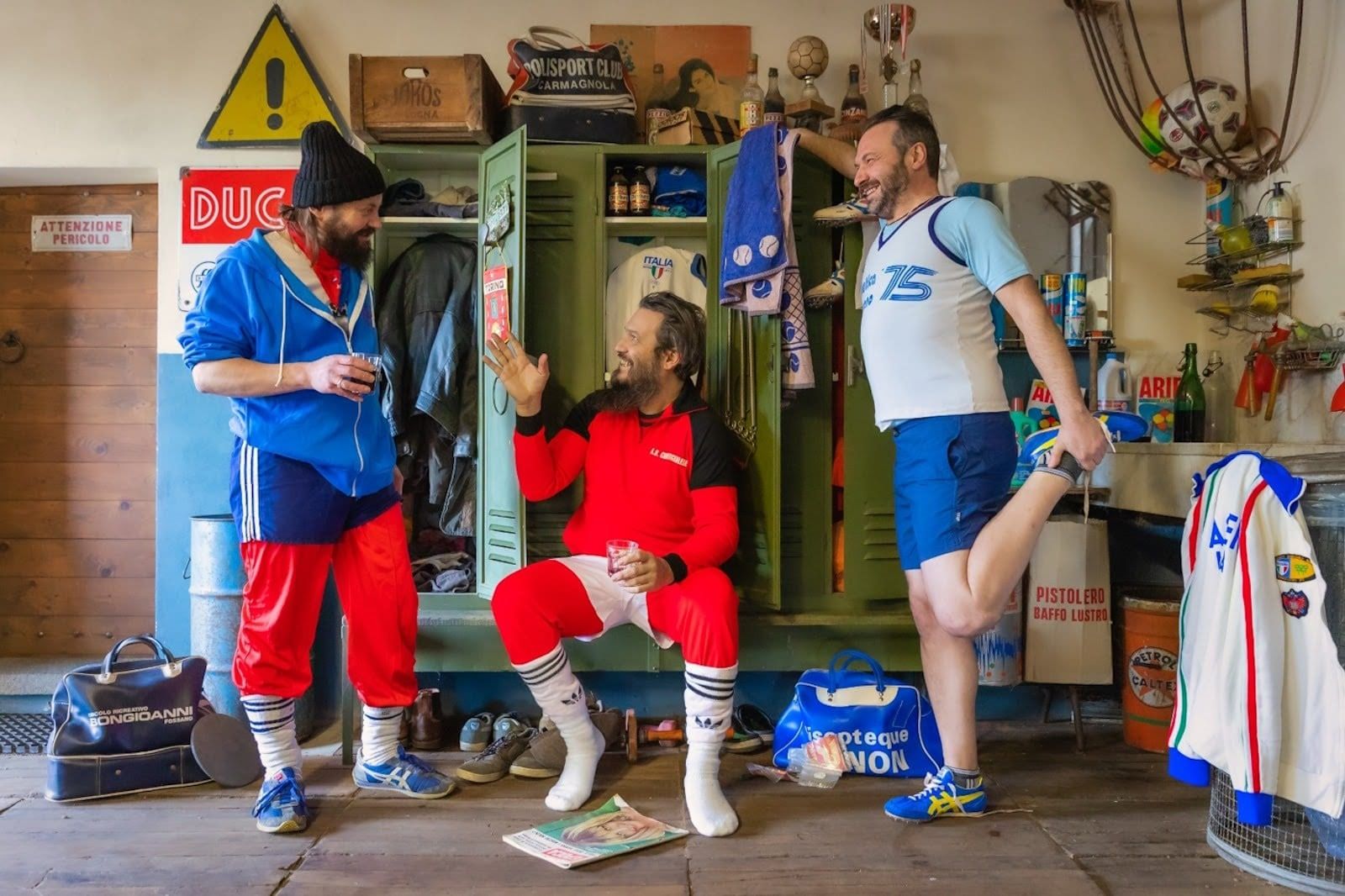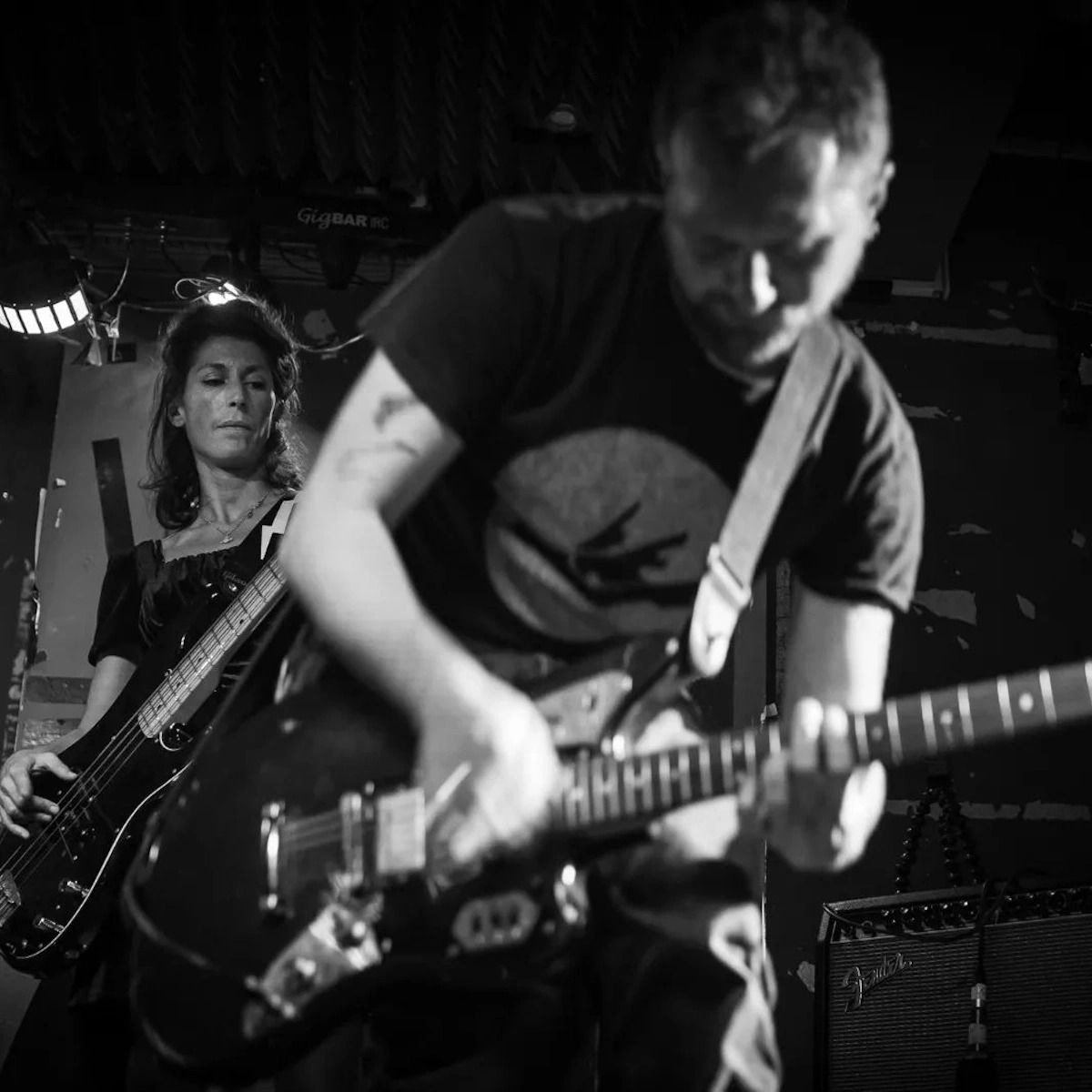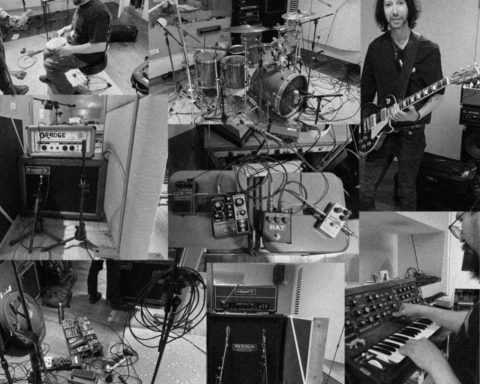When you think of screamo and post-hardcore music, the serene landscapes of Costa Rica probably don’t come to mind. Yet, San José-based trio Cabeza de Agua is breaking that stereotype with an electrifying debut EP, courtesy of Steadfast Records.
Formed by Diego Cubillo, Emanuel Mora, and Mauricio Alvarado, each hailing from different corners of the Costa Rican music scene, joins us today for an in-depth interview that delves into the trio’s formation inspired by ’90s emo and screamo, how the band serves as a unique musical outlet separate from their other projects, the significance behind their name and track titles, their creative process in composing and recording, the eclectic elements in their music, and their perspective on the alternative music scene in Costa Rica, as well as a glimpse into their future plans.
Diego, Emanuel, and Mauricio were each active in different bands — including Adiós Cometa, Lentamente, Contraflores, Mal Visto, and Decora — across genres like shoegaze, hardcore, and slowcore. Yet their shared love for ’90s screamo and post-hardcore acts like Orchid and Saetia led to the formation of Cabeza de Agua.
“In such a small country as Costa Rica, it’s not easy to find musicians who share our specific tastes,” says Diego. “When we discovered our mutual love for this sound, we had to give it a go.”
Recorded live at Red Stag Studio in San José, the band’s self-titled EP is a homage to a myriad of influences. “We wanted to explore the emotional and chaotic realms of screamo and post-hardcore while adding our own twist,” Emanuel explains. From ambient elements to spoken word segments, the album offers a visceral experience that pays tribute to its ’90s predecessors yet creates something undeniably modern.
The band’s name, Cabeza de Agua, serves as a metaphor for their sudden and powerful sound. Translating to “flash flood” in Costa Rican slang, the name was initially conceived by Emanuel for an ambient track for his other band, Adiós Cometa.
“We thought it would be a perfect fit for our new project,” he says. Even the tracks on the EP pay homage to their roots; each one is named after a Costa Rican river, underlining their connection to their homeland.
In an exclusive interview, the trio delve deeper into their shared musical backgrounds, the significance of their band name, and the challenges and thrills of recording their debut EP.
Can you elaborate on how your shared love for ’90s emo and screamo led to the formation of Cabeza de Agua?
In such a small country as Costa Rica it’s not easy to find fellow musicians that like or are able to play this kind of music. It’s not as popular as, say, metal, hardcore or punk, so when we met playing for other bands and discovered that the 3 of us loved it and actually wanted to explore these styles, we decided to give it a go. We all share similar backgrounds music-wise and love bands like Mineral and Saetia, so we’re pretty flexible between sweet melodic lines and pure chaos. We also totally love all the Latin American emo wave that have been getting bigger and bigger, especially bands from Perú like Fiesta Bizarra and 16 Bits, and wanted to take part in that.
Each of you is involved in other bands like Adiós Cometa, Contraflores, and Decora. How does Cabeza de Agua serve as an outlet for musical expressions that you couldn’t explore in those other projects?
Because, despite being somehow influenced by it, none of our other bands have delved entirely into emo and screamo in the same way that Cabeza de Agua does. Recently, my other band, Adiós Cometa, has gone a little further and our newest single is something like a mix between Shoegaze and emo and even has some screamed vocals, but the path it takes with the influence is definitely different than CDA. Decora have also recently experimented a little bit with screamed vocals and more slowcore-tinged emo influences.
Contraflores was, on the other hand, a more sonically similar band than CDA, but it also had more metal and hardcore elements that make it different. With CDA, from the start our idea was to go all the way with the emo and screamo influences so we just play whatever we want.
The name Cabeza de Agua translates to “flash flood” in Costa Rican slang, which you’ve described as a fitting metaphor for your sound. Could you delve deeper into the significance of the name?
I (Emanuel) originally came up with the name for an ambient track that I did with Adiós Cometa in 2022. It was around that time that Diego, Mau and I started this new band and when we got to the point of thinking about band names I proposed Cabeza de Agua and we all thought it was perfect. So there’s this lil reference between the two bands that I think is cool.
You’ve mentioned that all the tracks are named after Costa Rican rivers. What led to this unique naming scheme?
We wanted to somehow incorporate our Costa Rican identity into the band, so having the band named as a flash flood, it made all the sense to name the tracks after rivers. Costa Rican rivers, for sure.
“Pacuare” was the song that catalyzed the formation of the band. Can you tell us more about how Diego’s cell-phone-recorded riffs got you all excited to make music together?
I’m a sucker for twinkly riffs and weird time signatures so actually hearing someone I know playing that kind of stuff was exciting. As I said before, it’s not the most popular kind of music, so finding someone that likes it, even more good enough to play it on guitar, is not that easy.
The track “Savegre” sounds like it has a lot of energy and coordination between the members. What was the most challenging aspect of recording this song?
It’s definitely my favorite song. I love the unhinge energy and the sensation of controlled chaos. It was challenging to record because we actually finished that song just before recording it… I mean, at the studio, when we were about to record it. There were some parts that we still needed to figure out, especially at the end of the song. So I came up with the weird metrics at the end of the track and it was particularly hard for Mau, the drummer, to learn it so quickly. But in the end he nailed it really well.
For the song “Térraba,” you chose to include an ambient piece at the end of the album. What led to the decision to end on this softer note, and how does it encapsulate the overall message of the EP?
With the band being named after an ambient track, it seemed interesting and self-referential to include an ambient track in the EP, especially when it serves as the perfect metaphor of the swollen river finally reaching the big, calm sea, and dispersing among its endless waves. Also, as I said before, I was definitely influenced by Suis La Lune, a Swedish act that used to mix screamo with ambient. The contrast between chaotic and calm sounds kinda makes each more powerful.
View this post on Instagram
You recorded the EP live at Red Stag Studio. What was the energy like in the room, and how did it contribute to the raw feeling you were aiming for?
We were in separate recording booths, kinda nervous because we needed to get the songs in just a couple of takes. We couldn’t look at each other but it felt amazing when we started hearing the controlled chaos coming together. It was really exciting.
You blend diverse elements like ambient music and spoken word into your compositions. What’s the thought process behind these unusual pairings?
We just were influenced by bands that have done it before. Bands like the aforementioned Suis La Lune and Iselia have successfully combined ambient with screamo. Spoken word is an even more common element, going back as early as with Indian Summer and the likes. We just wanted to create the kind of music that we could find at some old blogpost and obsess over with.
How would you describe the sound you have achieved on this EP, given your diverse influences ranging from screamo and post-hardcore to ambient and spoken word?
I would describe it as a snapshot of a very particular moment for the 3 of us. A raw and kind of naive snapshot of our varied influences within the emo universe. It all happened really fast. We wrote 2 songs, rehearsed a couple of times, went to the studio and someone liked it and decided to put it on vinyl. It’s crazy.
Your lyrics sound like they range from chaotic and violent to bright and hopeful. What inspires these contrasting themes?
Hmm, I don’t think there are any violent lyrics. These are basically love songs. That’s something we wanted to do, contrasting aggressive music with this kind of sweet lyrics. Wanted to avoid the cliché of sad boy stuff.
The trio seems to share vocal duties in rapid succession. What’s the story behind this dynamic interplay?
We love how it sounds when you have more than one vocalist. I could mention The Number 12 Looks Like You, a band that had a great influence on me during my teenage years, and since then I have absolutely loved that dynamic. Originally it was just Diego and Mau screaming and me doing the spoken word, but at the end I also did some screamed vocals. It was fun doing that at the studio.
Could you speak a bit about the Costa Rican music scene, especially in relation to emo and screamo? What’s unique about the alternative music culture in Costa Rica?
(Copied from the Ceniza entry:) The first “real emo” band from Costa Rica that I’ve ever heard was Maulli Ruski. They released some demos around 2010 and I remember writing to them via MySpace all excited because I didn’t know anyone else listening to that kind of music at the time.
During the course of the years, after breaking up, those same guys basically did several new bands, released something, broke up and then added someone else, formed a new band, released something and repeated. I could mention Gnarwal and Girl Scouts.
Then they formed Ceniza, probably their most stable act, and have released a couple of really good EPs. Before that, you could find some typical emo/post-hardcore acts from the 2000’s like Complot, a band that I used to love during high school.
Besides that, I could add that there’s a new wave of emo and screamo bands growing as we speak. I have a label, Furia, and I’ve been working on promoting these new bands, like Nuncamuere, Sucumbir, Ceniza, Escápula, Ventajas de No Ser, El Chunche, Pacífica, Marea Tranquila, Sol and Nossara. Their sounds range from super twinkly and clean screamo (Nuncamuere), to Turnover-esque emo (Marea Tranquila), to violent and blast-beats filled screamo (Sucumbir, Ventajas de No Ser), to Post-Hardcore-y (Nossara), to Post-Rock influenced (Pacífica, Sol), so that makes it cool and varied.
We recently did a show with most of those bands in a basement in San José and you could sense a new movement coming together. A lot of new faces within the public, excited to see bands like this. We’ll soon release a video on youtube with all the sets and also a cassette comp with stuff from all these artists and some new ones that are preparing to make their debut.
If you’re looking for some independent, under the radar emo and hardcore, give these bands a listen:
Nuncamuere – Querido
Guayo is a Nicaraguan musician based in Costa Rica who creates incredible music all by himself at home. I recently saw him play live with a band and my mind was blown. It’s a ferocious yet clean sounding screamo with interesting riffs and ideas.
Escápula – Tema 1
Lo-fi noisy emo with super intriguing lyrics.
Ventajas de No Ser – La Niebla
VDNS is the solo project of Arío Rojas, who we actually recruited as our bass player for live shows. He quietly recorded and released 3 tracks during the pandemic that I absolutely adore for their energy.
View this post on Instagram
What role do local labels like Violence Records and Espasmo Nervioso Records play in the Costa Rican alternative music scene?
Violence Records, Espasmo Nervioso and the other labels mentioned are usually focused on metal and punk.
In relation to emo and screamo, Furia is the one label trying to promote it. We started a series of shows called En Un Abrir Y Cerrar de Ojos (translated to “In a Blink of an Eye”) focused on this new wave of bands, have a cassette comp coming soon and have plans to release new music by many of the artists mentioned before. I like to see Furia as a bridge between this new scene and a young new public discovering new artists, music and shows.
What are your future plans for Cabeza de Agua? Can fans expect a full-length album soon, or are you focusing on live shows for now?
We just played our first show and it felt great. We have a couple of new songs that we want to record soon. They are a little different from the EP, a little longer, less chaotic and with more room to breathe, so we’re excited to try that as well. Hopefully release a split, as we would love to collaborate with bands from different parts of the world. Play a couple of more shows. , We’ll see where it goes.




